
Machine vision technology enables industrial equipment to “observe” and make rapid decisions based on visual data. Common applications include defect detection, guidance, dimensional measurement and identification. As one of the foundational technologies of industrial automation, it has long been instrumental in improving product quality, accelerating
production and optimizing manufacturing and logistics processes. Today, this mature technology is integrating with artificial intelligence (AI) and spearheading the transition to Industry 4.0.
Machine vision predates the application of AI, relying on embedded systems and algorithms to process image information and identify basic features. Traditional machine vision applications were relatively simple and required no AI, provided the image data was clear and easily distinguishable. Examples include barcodes and predictable shapes with precise patterns.
With the addition of edge computing and deep learning models, the capabilities and applications of machine vision are rapidly expanding. AI enhances machine vision, extending its role beyond quality control to tasks such as aiding workers in factories, warehouses and transportation systems, allowing them to focus on more value-added tasks.

Increasing adoption across various domains where machine vision systems play a critical role in production, inspection, quality control and process optimization.

Expanding usage and enhanced analysis accuracy through AI and deep learning algorithms.

Frequent use in ensuring manufacturing accuracy and defect detection.

Applications are growing in agriculture, healthcare, transportation, defense and aerospace.

Emphasis on product innovation and differentiation, with vendors expanding ecosystems through mergers, joint ventures and partnerships.
Given the rapid development and expanding application fields, the global
machine vision market is expected to surpass $30 billion by 2035. The Asia-Pacific region is projected to dominate due to its dense manufacturing infrastructure, with over half of the market share attributed to fully structured machine vision systems used in process control and quality inspection.
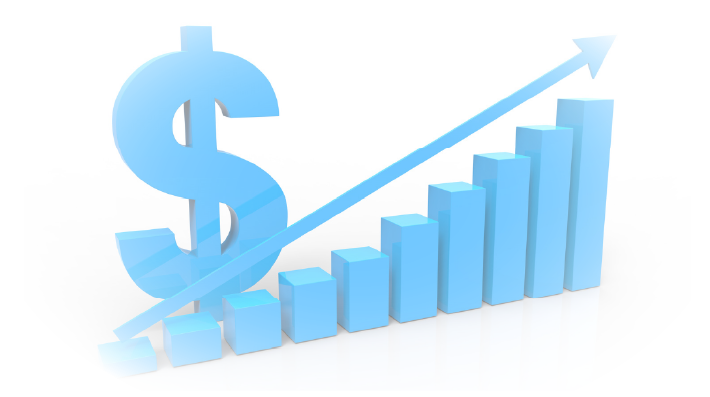
Machine vision’s vertical markets include manufacturing, healthcare, logistics and warehousing, transportation, agriculture, defense and aerospace. These industries benefit from efficiency and quality improvements, particularly in manufacturing where defect detection, identification, guidance and dimensional measurement are the most common applications.




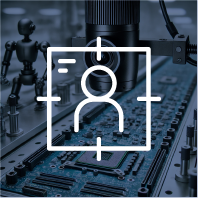
Identifying flaws or quality issues using high-resolution industrial cameras and algorithms to compare real-time production with predefined standards.
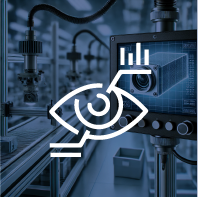
Recognizing and verifying objects, characters or patterns using Optical Character Recognition (OCR) and barcode scanning.
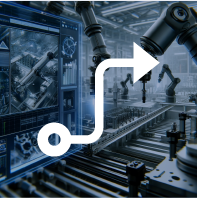
Assisting robotic systems in performing precise tasks such as assembly or welding, using 3D cameras and motion control.
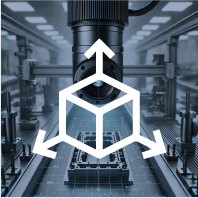
Ensuring products meet specified tolerances through accurate measurement of size, shape and geometry using high-resolution imaging and algorithms.
The process involves four main steps:

Acquiring image data through industrial cameras and lights.

Using image processing to extract key features for subsequent recognition.

Applying algorithms to identify objects, text and other elements.

Analyzing and acting on the recognition results.
The integration of AI improves accuracy and expands the system’s capabilities.
The technical architecture of machine vision is a comprehensive system configuration comprising multiple interconnected key components. The primary components include lights, industrial cameras and software. Additionally, components such as motion control, frame grabber and AI accelerators can be incorporated based on specific application requirements. Each of these components plays a crucial role throughout the process from image capture to decision-making and output.
At the core of the architecture is the industrial PC (IPC) or embedded system which serves as the main control center of the machine vision system. It is responsible for managing and processing overall operations.
The industrial cameras and lights are critical for image acquisition. They are typically connected to the industrial PC via RJ45 or USB interfaces, with their primary function being the capture of high-quality image data.
A proper light is essential for maximizing contrast and ensuring high-quality image capture. Poor lighting conditions cannot be compensated for even with advanced cameras and software. Common types of light include:
Positioned on the same side as the camera, typically using ring lights, suitable for uniform illumination.
Placed opposite the camera, ideal for measuring object dimensions by creating sharp contrasts.
Provides highly directional illumination, highlighting textures and creating shadows for better surface analysis.
Delivers soft, even illumination to
eliminate shadows and suppress surface textures.
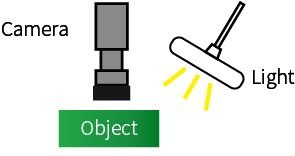
Type of Light | Coaxial | Spot | Area/Flood | Ring | Coaxial Diffuse | Dome |
|---|---|---|---|---|---|---|
Scenario | Surface inspection of metal, glass or other reflective objects; electronic component inspection | Small-area defect detection, precision inspection, component positioning | Large-area inspection,
such as packaging inspection, food inspection and appearance inspection | Surface defect detection, print inspection, electronic component inspection | Inspection of high-gloss materials, such as metal surfaces, plastic products, or precision mechanical parts | Handling reflective or irregularly shaped objects, such as spheres or complex surfaces, commonly used for inspecting automotive parts or high-reflective materials |
Camera | Area Scan Camera Smart Camera | Area Scan Camera Smart Camera | Area Scan Camera Line Scan Camera | Area Scan Camera Smart Camera | Area Scan Camera Smart Camera | Area Scan Camera Smart Camera |
Camera Interface | Area Scan RJ45、USB、Camera Link、CoaXPress Smart CAM RJ45、USB | Area Scan RJ45、USB、Camera Link、CoaXPress Smart CAM RJ45、USB | Area Scan RJ45、USB、Camera Link、CoaXPress Line Scan RJ45、USB、Camera Link、CoaXPress | Area Scan RJ45、USB、Camera Link、CoaXPress Smart CAM RJ45、USB | Area Scan RJ45、USB、Camera Link、CoaXPress Smart CAM RJ45、USB | Area Scan RJ45、USB、Camera Link、CoaXPress Smart CAM RJ45、USB |
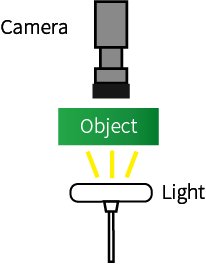
Type of Light | Telecentric | Flat Collimated | Ring | Flat Diffuse |
|---|---|---|---|---|
Scenario | Precise dimensional measurement, shape detection and high-precision metrology, commonly used for inspecting electronic components and mechanical parts | Applied in scenarios requiring high edge clarity, such as semiconductor inspection, precision parts inspection, and other applications demanding clear contours for detection | Shape measurement and object contour detection, particularly suitable for applications that emphasize object edges, such as printed materials, packaging, and precision measurement | Used for high-contrast objects, suitable for scenarios requiring fine contour detection, such as edge detection of glass, plastic components or film materials |
Camera | Area Scan Camera Line Scan Camera 3D Camera | Area Scan Camera Line Scan Camera | Area Scan Camera Line Scan Camera | Area Scan Camera Line Scan Camera Smart Camera |
Camera Interface | Area Scan RJ45、USB、Camera Link、CoaXPress Line Scan RJ45、USB、Camera Link、CoaXPress 3D CAM RJ45、USB、Camera Link、CoaXPress | Area Scan RJ45、USB、Camera Link、CoaXPress Line Scan RJ45、USB、Camera Link、CoaXPress | Area Scan RJ45、USB、Camera Link、CoaXPress Line Scan RJ45、USB、Camera Link、CoaXPress | Area Scan RJ45、USB、Camera Link、CoaXPress Line Scan RJ45、USB、Camera Link、CoaXPress Smart CAM RJ45、USB |
The core of a machine vision system, industrial cameras are categorized by image capture methods:
Use pixel arrays to capture an entire image at once, suitable for static or slow-moving objects.
Pros: Easy to use, cost-effective, wide range of applications.
Capture one pixel row at a time, reconstructing the complete image in software. Ideal for high-speed conveyor systems.
Pros: Compact size, supports high-speed imaging.
All-in-one systems integrating cameras, algorithms and software for standalone operation.
Detect infrared light for unique applications such as low-light environments, smoke detection and thermal analysis.
Capture depth information using techniques like Time of Flight (ToF) or structured light for applications in robotics and automated inspection.
Analyze materials based on their spectral characteristics, commonly used in agriculture and material analysis.
Type | Features | Technical Architecture | Functions | Application Fields |
|---|---|---|---|---|
Area Scan Camera | Captures images of static or slowly moving objects, easy to use and install, fast imaging | Uses a 2D matrix sensor, captures the entire field of view at once; captures images directly with a pixel matrix | Precise target capture and analysis, comprehensive inspection of images | Automated inspection, quality control, object identification; widely used in most machine vision systems |
Smart Camera | Integrates computing power, software and algorithms in a compact system | Built-in processor and software, enabling internal image processing and analysis within the camera
| Provides real-time inspection, classification and analysis functions, reduces external processing needs
| Automated inspection, quality control, object identification, smart retail |
3D Camera | Captures 3D information of objects, suitable for complex geometric shape detection | Uses structured light, Time-of-Flight (ToF) or stereo vision technology; structured light is the mainstream solution | Accurately measures the depth and shape of objects, enabling 3D imaging | Robotic arm guidance, packaging and assembly inspection, medical equipment, smart factories |
Infrared Camera | Operates in low-light environments, penetrates fog, smoke and some opaque substances; capable of detecting features not observable in other wavelengths | Uses infrared sensors to detect light in the infrared spectrum | Detects temperature variations in objects, enabling thermal imaging analysis | Military, firefighting, medical, industrial production, customs |
Line Scan Camera | High-speed, continuous image scanning; compact size, installable in narrow spaces | Uses a single line of pixel sensors, constructs a complete image through linear motion | Detects moving targets, suitable for high-speed processing or rapidly moving image applications | Printing inspection, textile inspection, semiconductor manufacturing, logistics sorting |
Hyperspectral Camera | Captures image data across mul�ple spectral bands, suitable for detailed op�cal analysis | Detects objects by sensing various electromagnetic spectrum bands, identifies objects based on spectral properties | Provides material identification and classification, analyzes material properties | Agricultural inspection, mineral exploration, environmental monitoring, physics-related fields |
Motion control systems ensure precise positioning of objects or equipment for accurate imaging. These units collaborate with cameras and frame grabbers to enable:
Frame grabbers capture analog video signals, convert them into digital frames, and relay them to the system for processing. Commonly connected via PCIe interfaces, they play a vital role in ensuring accurate and efficient data transfer.

Software processes the image data captured by industrial cameras, converts image formats and extracts critical features for recognition and analysis.

Based on the extracted image features, application software performs analysis and judgment tasks, such as:

Software facilitates robotic applications. Robots act based on decisions made by the application software. For instance, robotic arms can pick semi-finished products deemed defective by the software from the production line and place them in the defective product area.
Software controls hardware devices to execute image processing and analysis. Based on the results, it makes accurate decisions, ultimately enabling automated applications.
AI accelerators are hardware devices in machine vision systems responsible for running AI models. Their primary purpose is to enhance the efficiency and accuracy of image recognition and data analysis. In scenarios involving large datasets or complex computations, AI accelerators become critical components of machine vision systems, particularly for tasks such as image recognition and analysis.
Designed specifically for graphic computations, GPU cards are powerful hardware suitable for AI tasks such as deep learning training, image generation, and natural language processing. Their high computational capacity and fast data transfer speeds make them ideal for handling extensive and complex calculations.
A complete modular system, GPU SOMs are single embedded modules that can be inserted into a carrier board to expand the system’s AI computational capabilities.
NPUs are specialized processors designed to accelerate AI applications. They mimic human neural systems and are energy-efficient, enabling long-term usage. NPUs are suitable for continuous AI computation tasks such as image generation and facial recognition.
Developed by Google, TPUs are processors designed to accelerate machine learning tasks, particularly for large-scale, low-precision computations.
VPUs are microprocessors tailored for accelerating vision-related tasks. They specialize in executing convolutional neural network (CNN) operations, focusing on single-purpose tasks.
ASICs are chips designed for specific and specialized applications, such as cryptocurrency mining, algorithm-based data analysis and inference tasks. These chips are optimized for single-use cases and are not versatile.
FPGAs are programmable logic gate arrays that can be configured to perform complex functions or act as logic gates. They offer flexibility and adaptability, along with low latency and power consumption, making them suitable for diverse edge AI applications.
DPUs are designed for network, data security and AI data management tasks. They are ideal for complex data processing tasks in data centers, such as big data, artificial intelligence, machine learning and deep learning.
The applications of machine vision can be categorized into defect detection, guidance, dimensional measurement and identification. Its technical principles consist of steps such as image input, image processing and feature extraction, object recognition and evaluation, decision-making and output.
The primary technical architecture is composed of lights, industrial cameras and software. Depending on the application scenario, additional components such as motion control, frame grabber and AI accelerators can be included. An industrial PC or embedded system serves as the control center of the machine vision system, managing and processing operations.
Manufacturing is the most widely applied field for machine vision, offering significant benefits in ensuring product quality and improving production efficiency. It also helps prevent errors caused by human intervention. To facilitate the understanding of the connection between machine vision technology and its use cases, the next issue will focus on application cases in the manufacturing domain:
Applied in quality inspection systems on production lines, this approach helps avoid issues such as missed detections or inconsistent standards caused by inspector fatigue. It provides faster and more stable detection compared to manual inspections and is not affected by extended working hours, maintaining consistent efficiency.
Automated Optical Inspection (AOI) systems combine embedded systems and machine vision as the core of inspection equipment. The embedded system handles computation and control while machine vision technology manages high-resolution image acquisition and processing. This integration enhances defect detection and automation capabilities in inspection systems.
When machine vision systems are paired with AI, defect detection on production lines is significantly optimized. AI improves the accuracy of detection, providing clear standards for distinguishing “good” and “defective” products, ultimately enhancing overall production efficiency.
Industrial smart cameras based on machine vision, integrate cameras, industrial PCs and software functionalities. Compared to infrared light grids, smart cameras offer superior performance in safety monitoring. They effectively meet the needs of hazardous work areas by ensuring safety, preventing unauthorized access or accidental entry into restricted zones.
To provide the best experiences, we and our partners use technologies like cookies to store and/or access device information. Consenting to these technologies will allow us and our partners to process personal data such as browsing behavior or unique IDs on this site and show (non-) personalized ads. Not consenting or withdrawing consent, may adversely affect certain features and functions.
Click below to consent to the above or make granular choices. Your choices will be applied to this site only. You can change your settings at any time, including withdrawing your consent, by using the toggles on the Cookie Policy, or by clicking on the manage consent button at the bottom of the screen.